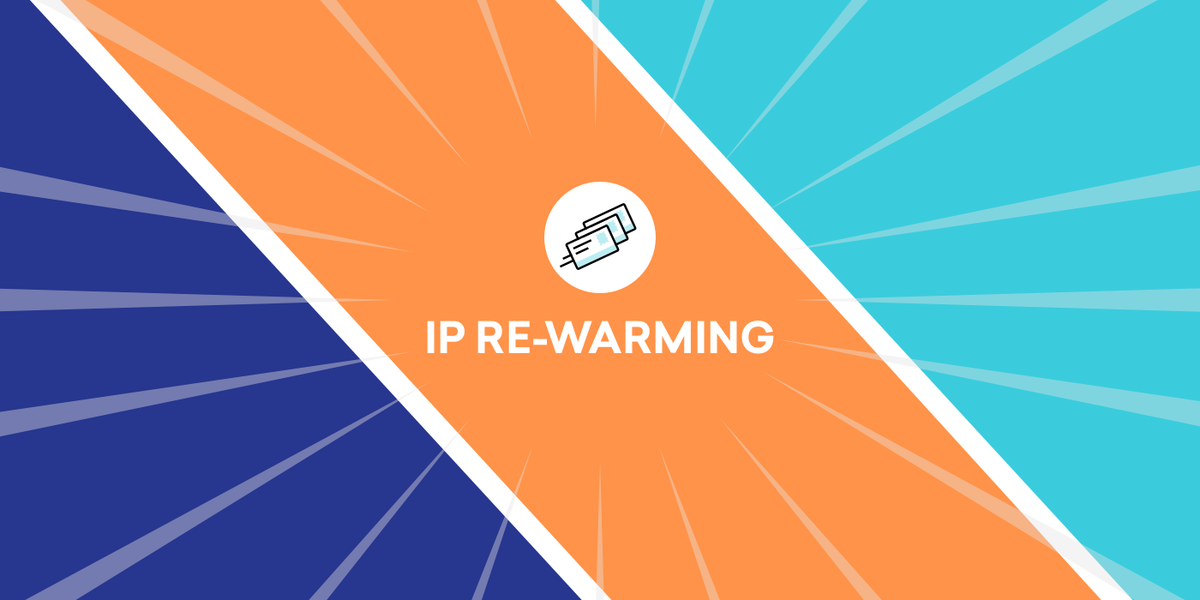Email Must-Knows: What Is IP Re-Warming?
Published on October 04, 2019/Last edited on October 04, 2019/4 min read


Team Braze
When people talk about IP warming, there’s a tendency to discuss it like it’s a one-and-done sort of thing. Just slowly increase the number of emails you send until you’re at the level you intend to send regularly and—boom!—you’re done. But while some brands will go through the warming process with few bumps and go on to send steady volumes of email to their highly engaged customers, many companies find themselves having to do something that’s rarely discussed: Namely, the IP re-warming process.
What is IP warming?
For most brands, email is a key engagement channel—but only if they’re able to successfully deliver messages to their customers. In order to do that, these companies need to prove to internet service providers (ISPs)/inbox providers that they’re legitimate, wanted senders who should be allowed to place mail in customers’ inboxes.
IP warming is a strategy to make that process easier. ISPs are very cautious about new email senders, especially ones who send email at large volumes, so blasting messages to your entire email list on day one can get you labeled as a potential spammer. Instead, email senders should add email volume gradually for each ISP and target their most engaged users, in order to demonstrate that they’re sending messages that people actually want to receive. They’ll also want to ensure that the email addresses they’re adding to their sends over time are valid, reputable, and associated with people who have explicitly opted in to receive email from their brand.
This process helps an ISP (1) get acquainted with your sending patterns and (2) ensure you’re a trusted sender. It’s one of the best practices for strong deliverability.
When Do You Need to Conduct an IP Re-Warming?
As a rule, brands that care about email deliverability should always go out of their way to avoid attracting negative attention from any ISP—otherwise, they can find their outreach stuck in the spam folder. In a couple of common circumstances, IP re-warming can be necessary to avoid this unpleasant fate.
Situation #1: You’ve just started IP warming—and things aren’t going quite right
IP warming tends to be progressive—you build on the progress made by your last send. So if you’re early in the IP warming process and are finding that you just aren’t seeing the kind of engagement or metrics that you’re looking for, you may well be better off taking a breather and reassessing your approach.
Our advice? Pause. Look at your email list. Give it a solid cleansing. (A few easy and effective ways to clean your list include sunsetting unengaged users, validating email addresses at sign-up, or implementing a double opt-in to ensure the users being added to your list actually want to receive messages from you.) And when you feel confident that all the people on it are people who actually want to receive emails from your brand, start the process back up again—ideally within a day or so of stopping.
Keep an eye on engagement (especially opens, bounces, and deferrals), follow all the IP warming best practices, and you’ll have the best possible shot to get your email deliverability where it needs to go.
Situation #2: You know you need to send SIGNIFICANTLY more emails than you currently do
This one is a little different. While IP warming is often associated with the early days of an email marketing program, it can also be an essential part of scaling your email strategy. If, for instance, you usually send 500,000 emails a day but know that you’re going to need to send 2 million next Thursday, IP re-warming is just what the doctor ordered.
What’s that, you say? You originally warmed your IP a while back when you first reached out to your list, so adding a million or so new users should be fine? Not so fast. When you have a significant increase in the number of customers you’re sending to, you need to treat the re-warming process with the same care and thoughtfulness you brought to your initial warmup.
Failing to properly warm your IPs to those increased volumes can lead you to run into the same sorts of deliverability issues that plague any brand that doesn’t warm their IPs: That is, suspicious ISPs, messages that go right to spam, and an email marketing strategy that just doesn’t live up to what it’s capable of.
Final Thoughts
Whether you’re looking to right your ship during an IP warm-up that’s struggling or searching for smart ways to prepare for the holiday email rush, IP re-warming is a key tool to keep in your back pocket. After all, it’s always a good idea to make sure that your email list is clean and that your email send volume is rising in a steady, gradual manner.
To learn more about how Braze can support strong deliverability and smart, relevant email messaging experiences, check out our Email Product Page.
Related Tags
Releated Content
View the Blog
Are you AI-savvy enough to survive? A wake-up call for CMOs

Team Braze

What are contextual bandits? The AI behind smarter, real-time personalization

Team Braze

What is a multi-armed bandit? Smarter experimentation for real-time marketing
